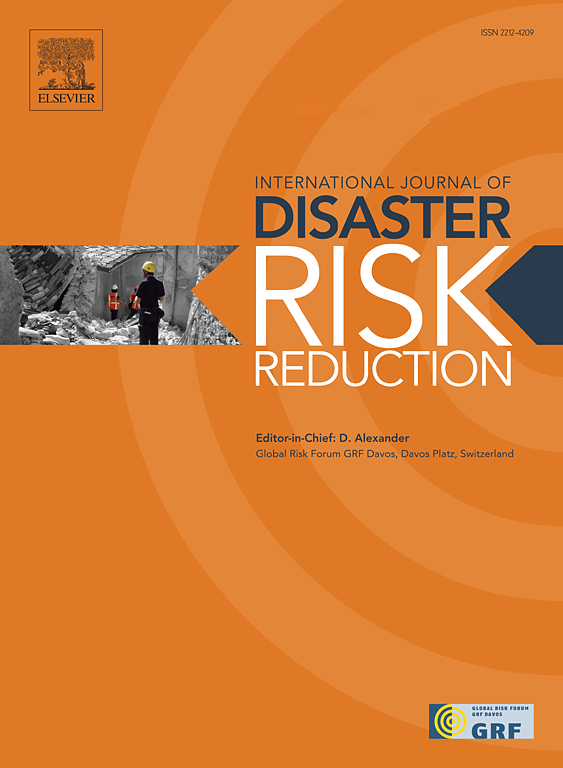Who purchases flood insurance, and why? Evidence from the Hudson valley
IF 4.2
1区 地球科学
Q1 GEOSCIENCES, MULTIDISCIPLINARY
International journal of disaster risk reduction
Pub Date : 2025-04-17
DOI:10.1016/j.ijdrr.2025.105472
引用次数: 0
Abstract
In the United States, increasing the number of homeowners insured through the National Flood Insurance Program (NFIP) is a key goal in federal and state efforts to manage flooding impacts. This study draws on a survey of households in the Hudson valley of New York State to examine which households insure and how different homeowners view insurance, examining patterns across homeownership status as well as location inside or outside federally designated Special Flood Hazard Areas (SFHAs). Flood insurance take-up was highest among mortgage-holding homeowners living in SFHAs, who are required to purchase flood insurance. Majorities of both insured and uninsured homeowners expressed low confidence that they could pay for flood damage on their own and low confidence that the NFIP would cover costs of flooding. Many, including over one-fifth of those living in high-risk areas, see their risk of flooding as low enough to merit not insuring. Understanding flood insurance behavior and encouraging preparedness requires addressing how people in varied situations evaluate cost, risk perception, and trust in institutions.
谁购买洪水保险,为什么?哈德逊河谷的证据
在美国,通过国家洪水保险计划(NFIP)增加投保的房主数量是联邦和各州努力管理洪水影响的一个关键目标。本研究对纽约州哈德逊河谷的家庭进行了调查,检查了哪些家庭投保,不同的房主如何看待保险,检查了不同房屋所有权状况的模式,以及联邦指定的特殊洪水灾害区域(SFHAs)内外的位置。居住在须购买洪水保险的sfha的按揭房主中,购买洪水保险的比例最高。大多数有保险和没有保险的房主都表示,他们对自己能够支付洪水损失的信心很低,对NFIP能够支付洪水费用的信心也很低。许多人,包括超过五分之一生活在高风险地区的人,认为他们的洪水风险很低,不值得投保。了解洪水保险行为并鼓励备灾,需要解决人们在不同情况下如何评估成本、风险感知和对机构的信任。
本文章由计算机程序翻译,如有差异,请以英文原文为准。
求助全文
约1分钟内获得全文
求助全文
来源期刊

International journal of disaster risk reduction
GEOSCIENCES, MULTIDISCIPLINARYMETEOROLOGY-METEOROLOGY & ATMOSPHERIC SCIENCES
CiteScore
8.70
自引率
18.00%
发文量
688
审稿时长
79 days
期刊介绍:
The International Journal of Disaster Risk Reduction (IJDRR) is the journal for researchers, policymakers and practitioners across diverse disciplines: earth sciences and their implications; environmental sciences; engineering; urban studies; geography; and the social sciences. IJDRR publishes fundamental and applied research, critical reviews, policy papers and case studies with a particular focus on multi-disciplinary research that aims to reduce the impact of natural, technological, social and intentional disasters. IJDRR stimulates exchange of ideas and knowledge transfer on disaster research, mitigation, adaptation, prevention and risk reduction at all geographical scales: local, national and international.
Key topics:-
-multifaceted disaster and cascading disasters
-the development of disaster risk reduction strategies and techniques
-discussion and development of effective warning and educational systems for risk management at all levels
-disasters associated with climate change
-vulnerability analysis and vulnerability trends
-emerging risks
-resilience against disasters.
The journal particularly encourages papers that approach risk from a multi-disciplinary perspective.
 求助内容:
求助内容: 应助结果提醒方式:
应助结果提醒方式:


